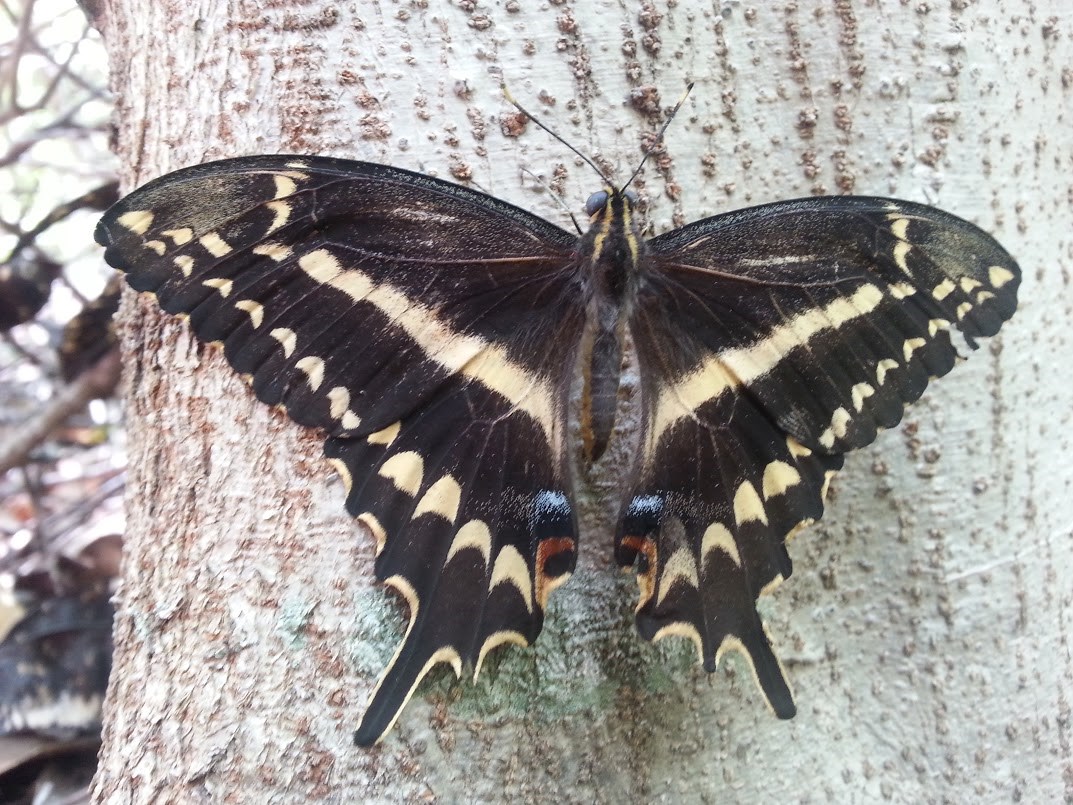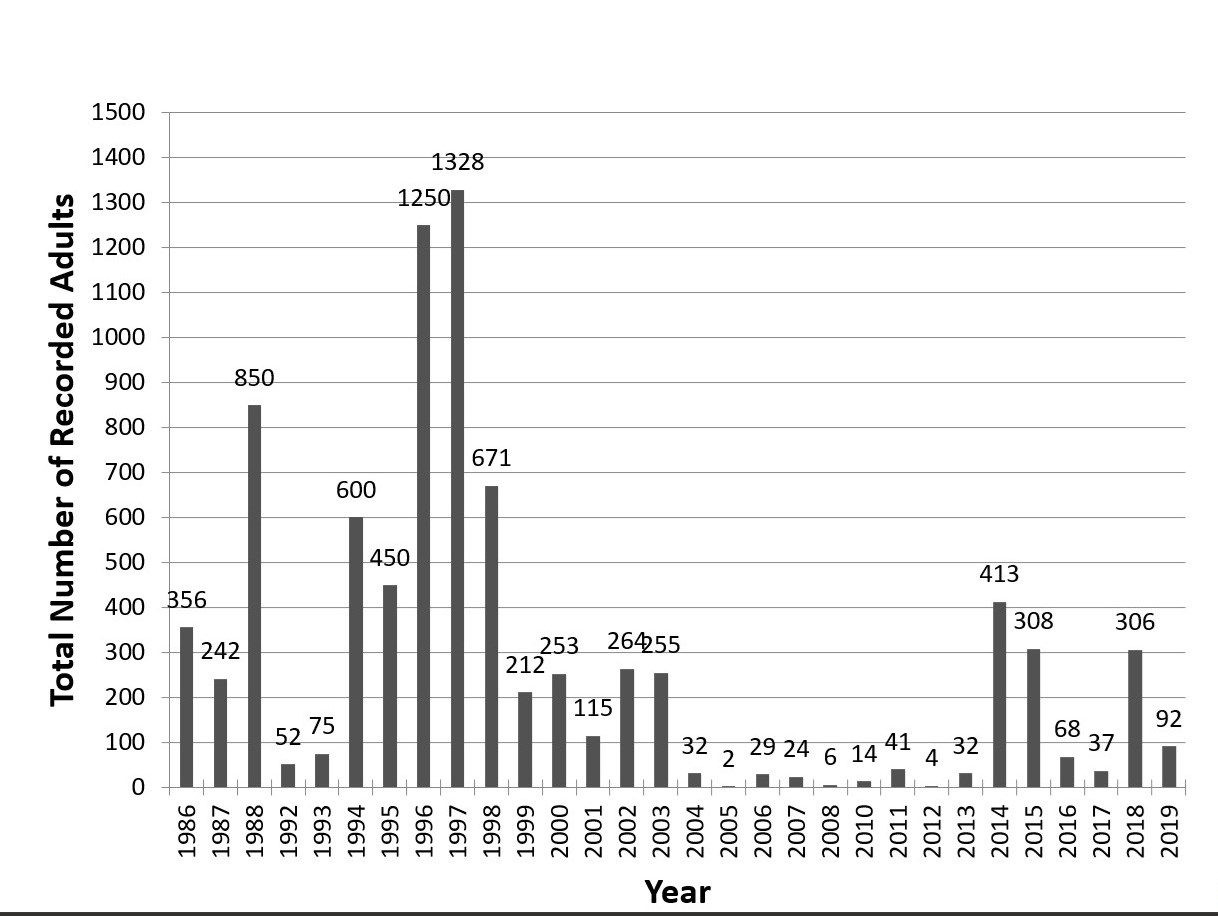Last updated: June 16, 2020
Article
Partners Work to Bring Back Endangered Schaus Swallowtail

Jaeson Clayborn
The Schaus swallowtail (Heraclides aristodemus ponceanus) is a large dark brown butterfly with yellow markings, and you can only find it in South Florida and the Florida Keys. But the last 40 years or so, it’s been hard to find the Schaus swallowtail even there. Habitat loss, pesticide use, and other human activities limited this beautiful butterfly’s range and decimated the population. Now you can find it in just a few Keys, and its main stronghold is in Biscayne National Park. The Schaus swallowtail has been listed under the Endangered Species Act since April 28, 1976. Its risk of extinction is very high. That’s why a large group of partners in the Imperiled Butterfly Work Group (IBWG) work hard to increase the numbers of the Schaus swallowtail.
Timing Is Everything!
Schaus swallowtail usually only reproduce once per year. Most adults appear from mid-May to mid-June, and then there’s a small second late-summer flight season. The narrow window of adult flight is due in large part to the relationship the Schaus swallowtail has with two trees: torchwood and wild lime. The Schaus swallowtail larvae rely on these two trees and their new spring growth for food. Because Schaus swallowtail have limited time and limited habitat, it may take a long time for populations to rebound if there’s a disturbance, like a hurricane or drought.
A Brief History of the Schaus Swallowtail
Historically, the Schaus swallowtail’s range has included Miami to the middle Florida Keys, including Biscayne National Park. In 1984, scientists counted only 70 adults, so they began basic ecological research and population monitoring. Between 1985 and 1990, the species fluctuated between an estimated 600 to 1,300 adults. Then Hurricane Andrew blew through in 1992. The number of Schaus swallowtail in Biscayne plummeted to only 58 individuals. Two short years later, the number had jumped back up to 600. After 1995, population estimates increased to pre-hurricane levels, in part due to a captive breeding and reintroduction program directed by the University of Florida (UF). Then several years of drought hit, once again devastating the Schaus swallowtail numbers. Population estimates declined to between 300 to 400 adults in 1998 and 1999. And they dropped again to only about 100 to 250 adults from 2000 to 2003.
In 2010, the Imperiled Butterfly Working Group (IBWG) took action. The IBWG consists of state, federal, and non-government organization representatives. This group of partners decided they needed more information to determine the current status of the Schaus swallowtail. Researchers had not done a systematic or comprehensive population survey since 2003. The IBWG made a multi-year survey of all areas potentially occupied by the butterfly a top priority action. These surveys revealed low population numbers, with only 4 individuals found range-wide in 2012!
Bold Steps to Increase Population
Officials knew they needed to do something bold to save the Schaus swallowtail from extinction. The U.S. Fish and Wildlife Service (FWS) authorized taking individual wild butterflies into captivity in 2013. Using the individual butterflies, they began a captive-breeding program to assist the population. UF researchers collected 100 eggs and 5 larvae. Then they reared them to pupation under controlled laboratory conditions following the established FWS protocol and reintroduced them in the wild.
Ongoing annual monitoring shows that population numbers remain low. In the last 6 years of field monitoring, the total annual number of butterflies observed ranges between 37 to 480. The data show an overall increase in Schaus swallowtail butterflies compared 2004-2012. The increase is a result of several efforts:
- reintroduction of Schaus swallowtail raised in captivity
- habitat restoration by the National Park Service
- some beneficial disturbance from Hurricane Irma

Next Steps
The IBWG will continue field and laboratory efforts to monitor, rear in captivity, and reintroduce the Schaus swallowtail butterfly on Elliott Key and surrounding areas within Biscayne National Park. These efforts will help restore the species and prevent extinction. The University of Florida will engage in other activities:
- assess population trends
- determine area of occupancy
- collect genetic samples for future analysis
- evaluate recent organism reintroduction efforts
Additional captive breeding of individual Schaus swallowtail will be conducted to maintain and increase numbers in captivity to support additional rounds of organism reintroductions into the park in 2021 and 2022. Captive breeding may require additional collections of eggs and/or young larvae to help infuse new genetic material into the captive population. Ideally, these efforts will allow the Schaus swallowtail butterfly populations to grow and thrive.
Alternative Text for Graph
Total Number of Recorded Adults by Year1986 356
1987 242
1988 850
1992 52
1993 75
1994 600
1995 450
1996 1250
1997 1328
1998 671
1999 212
2000 253
2001 115
2002 264
2003 255
2004 32
2005 2
2006 29
2007 24
2008 6
2010 14
2011 41
2012 4
2013 32
2014 413
2015 308
2016 68
2017 37
2018 306
2019 92
